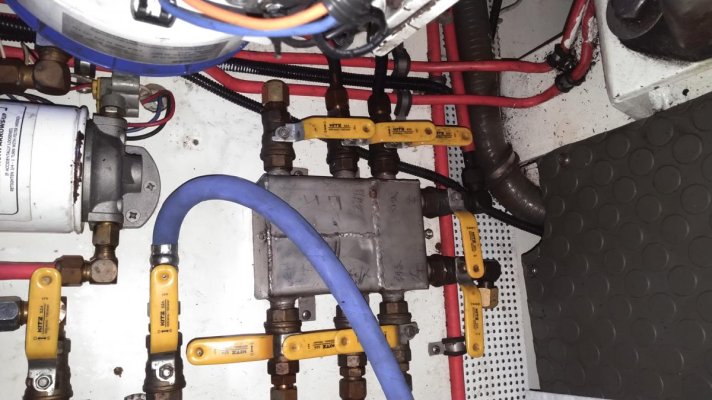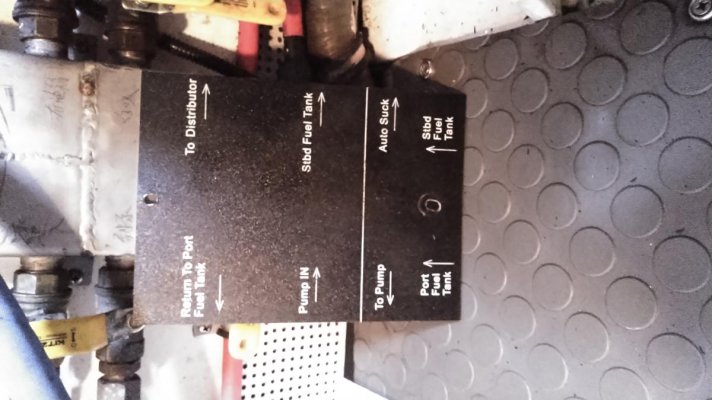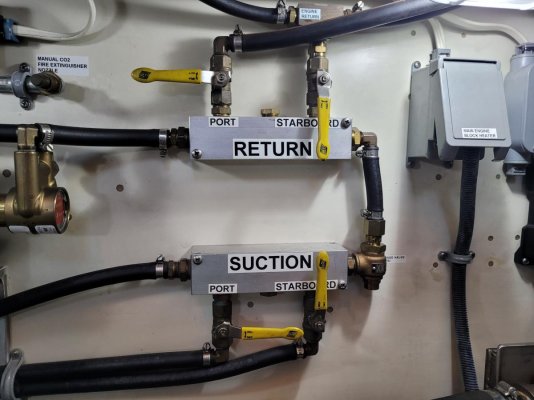My 2008 462 DD has two fuel distribution panels. Through trial and error, it was determined that the first panel is allowing air to enter the fuel flow and stop the engine. It doesn't leak fuel, but it allows air to enter. The second panel distributes fuel to the engine, generator and Webasto diesel heater. In order to use the boat, the first panel was bypassed by directly connecting the port tank to the second distribution panel. So now the fuel path is from the port tank to the second distribution panel which then routes it to a set of Racor filters prior going to the engine. Prior to bypassing the first panel, air bubbles were clearly visible in the Racor fuel bowls.
Anyone have experience rebuilding these distribution panels? They look to be pretty simple, just a box with valves. Attempting to loosen and tighten all the fittings at the panel had no effect on the air intrusion issue. Anyone see a valve itself fail and allow air in?
Thanks for any suggestions. Cheers.
Anyone have experience rebuilding these distribution panels? They look to be pretty simple, just a box with valves. Attempting to loosen and tighten all the fittings at the panel had no effect on the air intrusion issue. Anyone see a valve itself fail and allow air in?
Thanks for any suggestions. Cheers.



